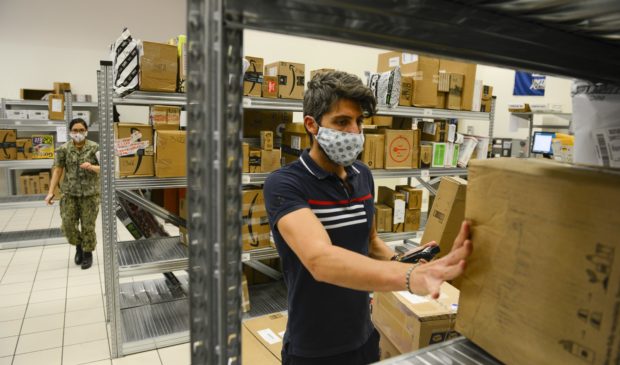Austin Public Health works to address Covid-19 racial disparities
Monday, June 15, 2020 by
Nina Hernandez During last week’s City Council work session, staff reported that Covid-19 is disproportionately impacting the Latinx and African American communities and detailed ways to address and reverse that trend.
According to an accompanying memo from Austin Public Health Acting Director Adrienne Sturrup, Latinos represent 34 percent of Travis County’s overall population. As of May 31, 56 percent of reported Covid-19 cases identified as Hispanic. Local hospitals provided data showing that 53 percent of patients hospitalized with Covid-19 identified as Hispanic. Over the past two weeks, Hispanics made up over 70 percent of new hospitalizations.
Thirty-seven percent of those who died of Covid-19 were Hispanic. And black Austinites, who make up just 8 percent of the Travis County population, made up 13 percent of deaths.
The city is employing an equity officer as part of its Incident Command Staff overseeing the emergency response. The city is also testing across the health care system, but especially in high-risk settings “such as known clusters where three or more positive cases have been identified,” according to the memo.
But Sturrup noted there is more work to do in addressing the disparities in all of the priority populations, which include populations of color, immigrants or undocumented residents, elderly residents, people experiencing homelessness, people who are uninsured or underinsured, people who are food insecure and low-income individuals.
The first step is a comprehensive testing strategy, which Sturrup’s memo notes is a communitywide effort. The Covid-19 Testing Group was created to oversee all of the city’s testing efforts and ensure all the components are working collaboratively. The group’s goals are to “develop and facilitate an equitable and holistic approach to Covid-19 testing that supports all residents … and collect Covid-19 testing data from all community healthcare providers to comprehensively address disease incidence with a focused response in affected communities and areas.”
The group is using mobile testing, facility testing, static testing (at the St. Johns and Pleasant Valley testing sites), and an APH Covid-19 testing hotline.
With regard to addressing disparities in the Latinx community, staff recommends the city set up pop-up testing in recommended areas, create a map of testing locations that is accessible by the Latinx community, and engage with Latinx leaders to identify barriers to testing.
Staff also recommends ensuring testing is available to the Latinx community through the provision of testing enrollment assistance services via phone or online portal in Spanish and offering testing in a way that feels more welcoming, by ensuring Spanish-speaking staff members are present.
Austin Public Health also has an extensive communications strategy that is designed to improve health outcomes of all Austinites, but especially communities of color. That strategy involves media, particularly those in other languages, as well as outreach at the neighborhood level and at other trusted service delivery sites (WIC, food distribution, grocery stores, primary care clinics).
In the long term, Austin Public Health recommends the use of best practice and evidence-based resources to guide the response for high-risk populations. It also recommends a draft plan for review to the Commission on Immigrant Affairs, Asian American Quality of Life Advisory Commission, Hispanic/Latino Quality of Life Resource Advisory Commission, African American Resource Advisory Commission, Joint Inclusion Committee, Human Rights Commission, and the City of Austin Equity Office.
The memo also suggests the city form a Covid-19 Community Advisory Committee composed of key community advocates to provide specific insight into the needs of populations of color related to Covid-19.
The Austin Monitor’s work is made possible by donations from the community. Though our reporting covers donors from time to time, we are careful to keep business and editorial efforts separate while maintaining transparency. A complete list of donors is available here, and our code of ethics is explained here.
You're a community leader
And we’re honored you look to us for serious, in-depth news. You know a strong community needs local and dedicated watchdog reporting. We’re here for you and that won’t change. Now will you take the powerful next step and support our nonprofit news organization?











